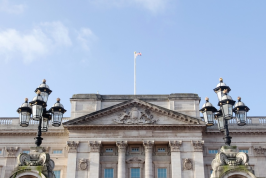Gospel in Art: Saint John Chrysostom, Bishop & Doctor

St John Chrysostom mosaic 9th century © Hagia Sophia, Wikimedia Commons
Source: Christian Art
Gospel of 13 September 2024
Luke 6:39-42
Jesus told a parable to the disciples: 'Can one blind man guide another? Surely both will fall into a pit? The disciple is not superior to his teacher; the fully trained disciple will always be like his teacher. Why do you observe the splinter in your brother's eye and never notice the plank in your own? How can you say to your brother, "Brother, let me take out the splinter that is in your eye," when you cannot see the plank in your own? Hypocrite! Take the plank out of your own eye first, and then you will see clearly enough to take out the splinter that is in your brother's eye.'
Reflection on the Hagia Sophia Mosaic
Saint John Chrysostom, born in Antioch around 347 AD, is one of the most celebrated Church Fathers in early Christianity. Known for his eloquence in preaching, he earned the nickname "Chrysostom," meaning "golden-mouthed." John was initially a monk, dedicating himself to a life of asceticism and study, but he later entered the priesthood in Antioch, where his powerful sermons on scripture and moral issues quickly garnered widespread attention. His sermons often addressed the social injustices of his time, criticising the wealthy and powerful while advocating for the poor and oppressed. This boldness, coupled with his deep commitment to Christian ethics, made him both a beloved and controversial figure.
In 398 AD, John was appointed Archbishop of Constantinople, where his influence continued to grow. As archbishop, he sought to reform the clergy and laity, emphasizing simplicity, humility, and charity. However, his strong stance against corruption and his outspoken nature led to conflicts with the imperial court and other Church leaders. His enemies eventually succeeded in having him exiled and, after enduring harsh conditions, John died in exile in 407 AD. Despite his tumultuous life, Saint John Chrysostom's legacy endures, particularly through his extensive writings, which include homilies, letters, and theological treatises. He is a Doctor of the Church in Western Christianity and one of the Three Holy Hierarchs in Eastern Orthodoxy.
Our artwork is a 9th-century mosaic of St John Chrysostom from the Hagia Sophia. It is a well surviving example of early Byzantine art, reflecting the deep reverence for the saint in the Eastern church. Originally, there were 14 portraits of Church Fathers adorning the Hagia Sophia, with seven on each side of the church's interior. These mosaics, created during the height of the Byzantine Empire, were designed to honour the theological giants who shaped early Christian doctrine, including Saint John Chrysostom, who held a significant role as the Archbishop of Constantinople where the Hagia Sophia is located. For centuries, these mosaics were hidden beneath layers of plaster and whitewash, a result of the building's conversion into a mosque after the Ottoman conquest in 1453. It wasn't until the restoration efforts of the Fossati brothers in the 1840s that these magnificent works of art were rediscovered. The Fossati brothers, Swiss-Italian architects, meticulously uncovered and documented the mosaics during their restoration. As they were covered for so long, they are still vibrant and strikingly luminous.
LINKS
Gospel in Art: https://christian.art/
Today's Reflection: https://christian.art/daily-gospel-reading/luke-6-39-42-2024/


















